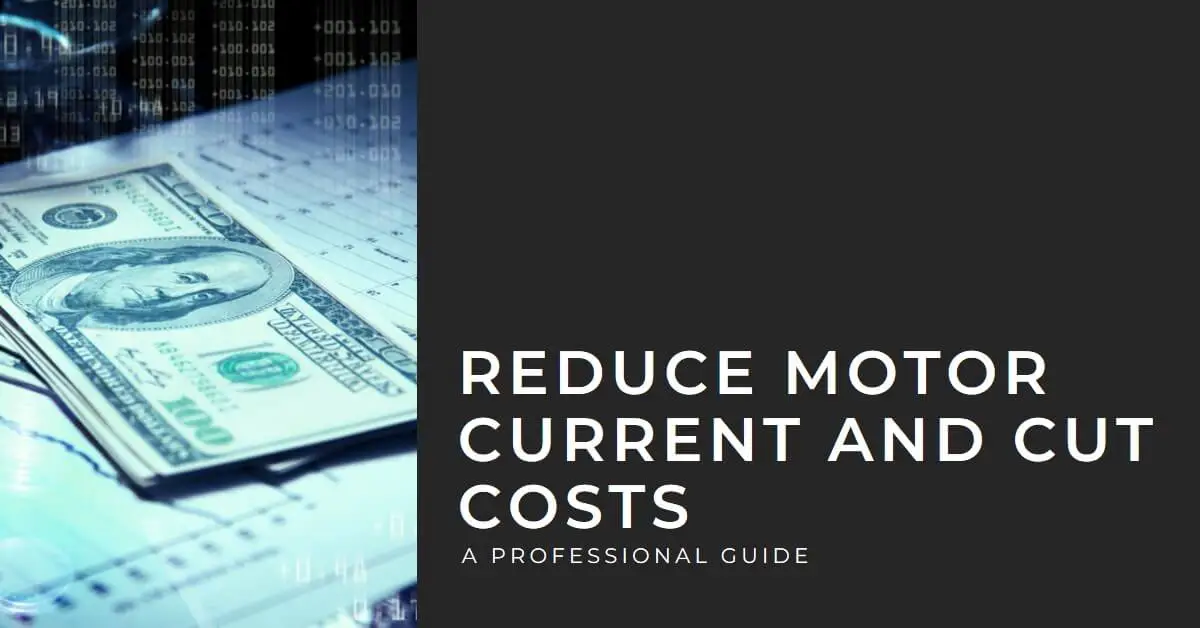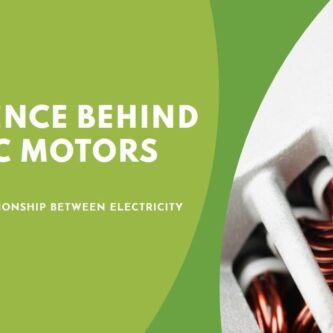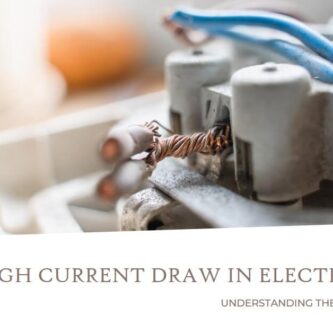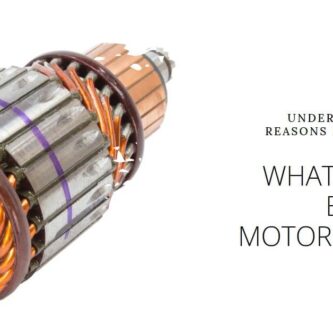Image: “Article Feature Image” by Bing is licensed under CC BY-NC-SA 4.0. Source: Bing Graphic Art. License: CC BY-NC-SA 4.0.
Reducing motor current is crucial for improving energy efficiency, extending motor lifespan, and minimizing wear and tear on electrical systems.
By implementing effective strategies, businesses and homeowners can achieve significant cost savings and contribute to a sustainable future.
Implementing strategies such as proper motor sizing, efficient motor design, VFDs, soft starters, power factor correction, and voltage regulation can significantly reduce motor current.
This article explores various approaches to reducing motor current while maintaining optimal performance and reliability.
Understanding Motor Current
Motor current refers to the flow of electric current required to operate a motor. It can be categorized into starting current and operating current.
Starting current refers to the initial surge of current when a motor is switched on while operating current is the continuous current drawn during motor operation.
Reasons for Reducing Motor Current
Reducing motor current offers several advantages, including:
Energy Efficiency and Cost Savings: Motors account for a substantial portion of energy consumption in various industries and households. By reducing motor current, energy efficiency improves, leading to significant cost savings on electricity bills.
Minimizing Wear and Tear on the Motor: Excessive current can subject the motor to additional stress, resulting in increased wear and tear. By reducing motor current, the strain on the motor is reduced, leading to enhanced reliability and a longer lifespan.
Enhancing Motor Lifespan: High motor current can accelerate component degradation and lead to premature motor failure. By reducing current levels, motors can operate within their intended specifications, resulting in extended service life.
Reducing Electrical Stress on the System: Excessive current can strain electrical systems, potentially causing voltage drops, overheating, and other electrical issues. Reducing motor current helps maintain a stable electrical environment, reducing the risk of system failures.
Strategies to Reduce Motor Current
1. Proper Motor Sizing Selecting the right motor size for the application is crucial. Oversized motors not only consume more energy but also operate less efficiently at lower loads. By accurately sizing the motor to match the required load, motor current can be minimized.
2. Efficient Motor Design and Technology Utilizing motors with high-efficiency ratings can significantly reduce motor current. Energy-efficient motors incorporate advanced design features, such as improved winding configurations and reduced friction, resulting in lower energy consumption.
3. Implementing Variable Frequency Drives (VFDs) Variable Frequency Drives (VFDs) enables precise control of motor speed by adjusting the frequency and voltage supplied to the motor. By operating the motor at the required speed rather than running at full capacity continuously, motor current can be significantly reduced.
4. Soft Starters and Reduced Voltage Starting Methods Soft starters and reduced voltage starting methods gradually ramp up the motor’s voltage and current during startup, reducing the initial surge of current. This approach minimizes starting current and helps prevent voltage fluctuations and potential damage to the motor.
5. Power Factor Correction Power factor is a measure of how efficiently electrical power is utilized. Low power factor results in increased motor current. Implementing power factor correction techniques, such as capacitor banks, improves power factor and reduces the motor current. For more information on Power Factor read my article on my other site: Power Factor Correction Explained For Beginners.
6. Voltage Regulation Maintaining consistent voltage levels is crucial for reducing the motor current. Fluctuations in voltage can result in higher currents. Installing voltage regulation equipment, such as voltage stabilizers or regulators, helps stabilize the voltage supply, minimizing current variations.
7. Regular Maintenance and Motor Optimization Proper maintenance practices, including lubrication, alignment, and insulation checks, can optimize motor performance and reduce motor current. Regular inspection and timely repairs ensure that motors operate at peak efficiency.
Read also my article: Unveiling the Mystery: What Causes High Current Draw in Electric Motors?
Practical Tips for Motor Current Reduction
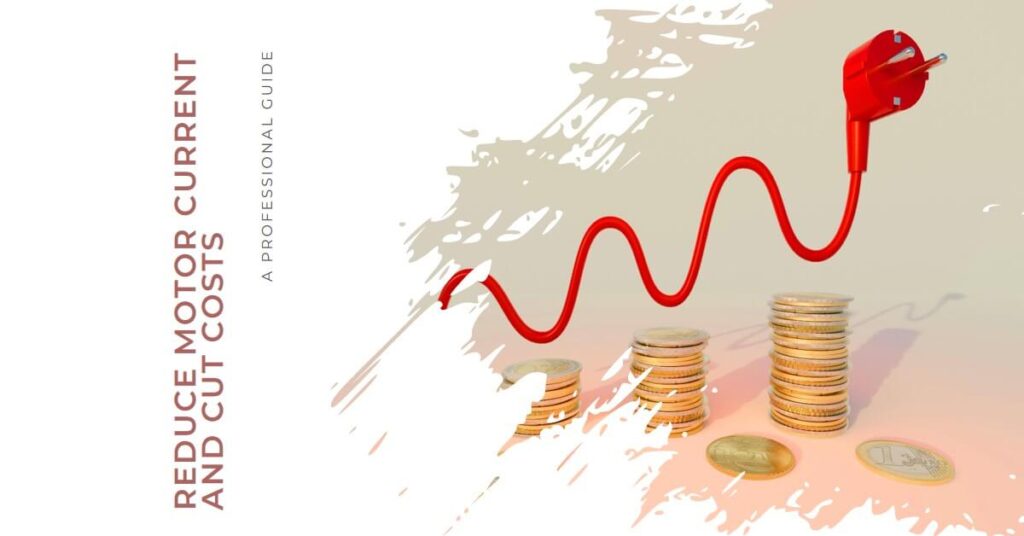
1. Optimal Operating Conditions Ensuring motors operate under optimal conditions, such as maintaining suitable ambient temperatures and providing adequate ventilation, helps reduce motor current.
2. Reducing Mechanical and Electrical Loads Efficient load management and minimizing unnecessary mechanical and electrical loads can significantly reduce motor current. Implementing energy-saving measures, such as optimizing production schedules and eliminating idle equipment, can yield substantial energy savings.
3. Proper Lubrication and Alignment Regular lubrication of motor bearings and ensuring proper alignment of motor components minimize friction, reducing current draw and enhancing overall motor efficiency.
4. Temperature and Cooling Considerations Controlling motor temperature through appropriate cooling methods, such as fans or heat sinks, prevents overheating and reduces the motor current.
5. Eliminating Unnecessary Motor Usage Identifying opportunities to replace motor-driven systems with more efficient alternatives, such as using variable speed drives instead of throttling valves, can help reduce motor current.
Case Studies and Success Stories
Numerous industries have successfully reduced motor currents and achieved significant benefits.
For instance, an industrial facility implemented VFDs and optimized motor sizes, resulting in a 15% reduction in energy consumption and substantial cost savings.
Similarly, a commercial building implemented power factor correction and voltage regulation techniques, reducing motor current by 20% and improving electrical system stability.
Challenges and Limitations
Implementing motor current reduction strategies may come with certain challenges and limitations, including compatibility with existing systems, cost implications, and potential impact on motor performance.
It is essential to evaluate these factors and consult with experts when implementing such measures.
Future Trends and Innovations
Advancements in motor technology, including the integration of artificial intelligence and automation, are expected to further enhance motor efficiency and reduce motor current.
Ongoing research and development aim to create more energy-efficient motors with improved control systems, resulting in even greater energy savings.
Conclusion
Reducing motor current offers substantial benefits, including energy savings, extended motor lifespan, and improved system reliability.
By implementing strategies such as proper motor sizing, efficient motor design, VFDs, soft starters, and power factor correction, individuals and businesses can achieve significant reductions in motor current.
These steps contribute to a greener and more sustainable future while ensuring optimal performance and cost savings.
you work With Electricity! Don’t leave empty-handed!
Looking to stay ahead of the game in the world of electrical engineering? Subscribe to my YouTube channel and gain access to exclusive content you won’t find anywhere else!
The staff I recommend (Amazon Affiliate Links to products I believe are high quality):
- Economy 120 Volt/60Hz AC Power Source – Step-Down Voltage & Frequency Converters 1800W
- UNI-T Digital Multimeter Tester UT139C
- 50-Amp Extension Cord for RV “100ft”
- Voltage Stabilizer 110/220v
- Hair Dryer “best selling“
- TOSHIBA EM131A5C-BS Countertop Microwave Ovens
Disclaimer: This contains affiliate links to Amazon products. I may earn a commission for purchases made through these links.

